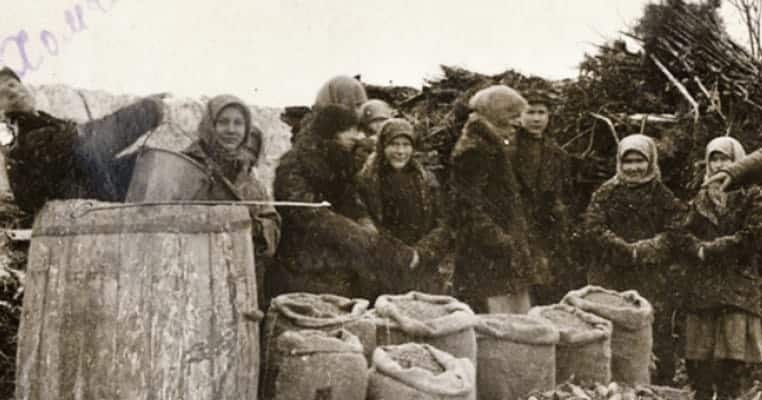The Soviet Union’s Great Famine of 1932-1933, also known as the Holodomor in Ukraine, was a man-made demographic catastrophe, caused by the policy choices of one man: Soviet dictator Joseph Stalin. As part of his bid to rapidly industrialize the Soviet Union, Stalin sought to force Soviet peasants off their privately owned plots, and into collective farms. Collectivization was widely resented and resisted by the peasants, especially in Ukraine, but Stalin, being Stalin, resorted to overwhelming brutality and repression to have his way. The result was widespread chaos, which combined with a poor harvest in 1932 brought about famine.
The exact number of victims is unknown, and will likely always remain a mystery. The estimates range from six to twelve million people dying in the Soviet Union, of whom four to five million were Ukrainians. Although the famine was man-made, there is no scholarly consensus as to whether famine had been a goal in and of itself, or whether it was the byproduct of badly thought out policies that backfired disastrously. Some scholars believe that the famine was an end in itself, intended to demoralize the Ukrainian public and crush a budding independence movement.

Farm Collectivization Sets the Stage for Catastrophe
When he rose to power in the 1920s, Stalin’s chief aim – aside from hanging on to power and crushing all who stood in the way – was to rapidly industrialize and modernize the backward Soviet Union. Fearful that the capitalists would someday turn on the USSR, he reasoned that unless his country caught up to the West, communism was doomed. As he put it in a 1931 speech: “We are fifty or a hundred years behind the advanced countries. We must make good this difference in ten years. Either we do it, or we shall be crushed“.
As it turned out, Stalin was prescient: ten years later, Nazi Germany launched a massive onslaught against the USSR, that came within a hair’s breadth of snuffing out the communist state. By then, however, Stalin had forced industrialization down his country’s throat, and the Soviet Union had the industrial capacity to match, and then exceed the Germans in arms and armaments. Between that, stubborn tenacity, and astonishing sacrifices, the Soviets managed to claw their way out of the abyss and on to ultimate victory. By 1945, the USSR was a superpower, and a global industrial giant, second only to the United States.
From the preceding perspective, rapid industrialization had borne fruit. However, it had come at a horrific cost, calculated in the millions of innocent men, women, and children, whose lives and liberties were ruthlessly crushed and sacrificed in order to implement Stalin’s policies. Nowhere was that more evident than in the policy of collectivization, which forced millions of Soviet peasants off their private plots and into large collective farms, which were to be run like factories.

Just like a thousand industrial workers in a factory could produce more than a thousand artisans working individually in their cottages, it was hoped that a thousand farmers in a factory-like collective farm could produce more than a thousand farmers tilling individual plots. It was also hoped that economies of scale would produce huge savings in labor: giant factory-like farms, using modern agricultural practices and machines, would not need as many farmers. Thus, millions could be taken from farms in the countryside, and redirected to factories in urban centers, to fuel industrialization with an abundance of workers. It would also strengthen communism by increasing the population of the industrial proletariat – viewed as communism’s most reliable class – while reducing the numbers of the more hidebound and reactionary peasantry.
Collectivization thus sounded good in theory – win, win, win, all around. In practice, it turned out to be catastrophic. For one thing, most peasants were reluctant to give up their private plots in order to join the collective farms. That was especially so among the more prosperous peasants – “prosperous” being relative in the Soviet context, often denoting those successful enough to afford a cow or a few pigs – known as kulaks. In addition to radical changes to traditional village life, collectivization meant forfeiting their land and livestock to the collective farms, and selling their produce to the government at minimal prices, set by the government itself. Stalin’s USSR being what it was, the decision was made to force collectivization down the peasants’ throats, and crush all who objected.

